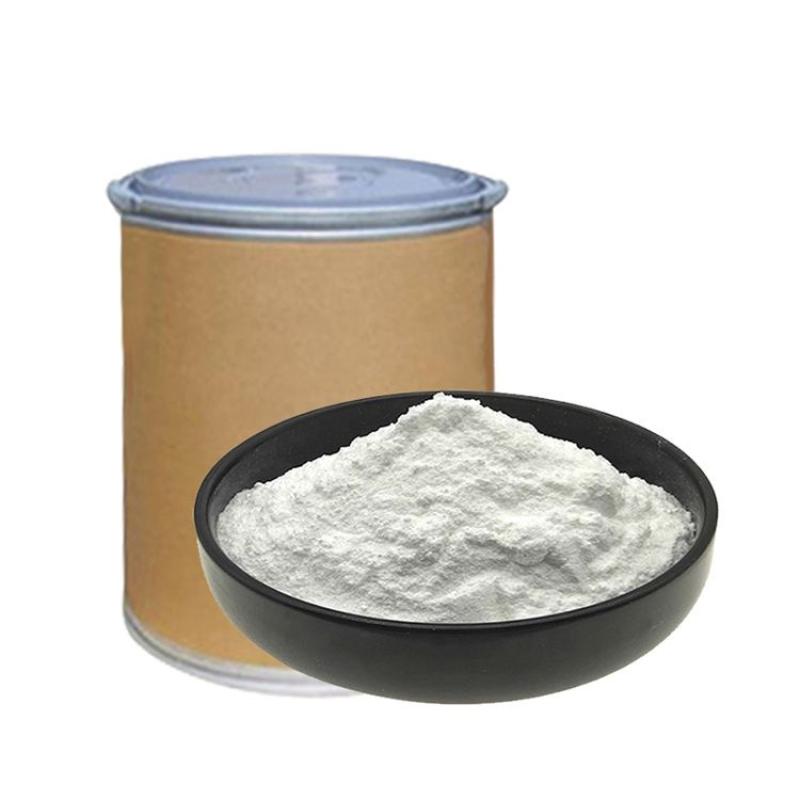Chlorfenapyr is converted into active substances (insecticidal interest) by multifunctional oxidases in bugs. note: multifunctional oxidase mainly performs an critical role inside the interpretation of pyrethroids, organophosphorus and macrolides.Common name: CHLORFENAPYRChemical name: 4-bromo-2-(4-chlorophenyl)-1-ethoxymethyl-5-trifluoromethylpyrrole-3-carbonitrile Molecular formula: C15H11BrClF3N2OStructural formula:Molecular weight: 407.61CAS No. : 122453-73-0Physical and chemical properties:Pure white solid. M.p.
Связаться сейчас
Chlorfenapyr is converted into lively materials (insecticidal activity) via multifunctional oxidases in bugs. note: multifunctional oxidase mainly plays an important function in the interpretation of pyrethroids, organophosphorus and macrolides.Common name: CHLORFENAPYRChemical name: 4-bromo-2-(4-chlorophenyl)-1-ethoxymethyl-5-trifluoromethylpyrrole-3-carbonitrile Molecular formula: C15H11BrClF3N2OStructural formula:Molecular weight: 407.61CAS No. : 122453-73-0Physical and chemical properties:Pure white solid. M.p.
Связаться сейчас
Common name: PendimethalinChemical name:N-(1-ethylpropyl)-2,6-dinitro-3,4-xylidineMolecular formula: C13H19N3O4Structural formula:Molecular weight: 281.31CAS No. : 40487-42-1Product description:Pendimethalin is an herbicide of the dinitroaniline class used in premergence and postemergence applications to control annual grasses and certain broadleaf weeds. It inhibits cell division and cell elongation.
Связаться сейчас
Common name: MetalaxylChemical name: methyl2-[(2,6-dimethylphenyl)(methoxyacetyl)amino]propanoateMolecular formula: C15H21NO4Structural formula:Molecular weight: 279.33CAS No. : 57837-19-1Product description:Metalaxyl is an acylalanine fungicide with systemic function.[3] Its chemical name is methyl N-(methoxyacetyl)-N-(2,6-xylyl)-DL-alaninate. It can be used to control Pythium in a number of vegetable crops, and Phytophthora in peas.
Связаться сейчас
Thiamethoxam is a extensive-spectrum, systemic insecticide, which means that it's miles absorbed speedy with the resource of plant life and transported to all of its components, which includes pollen, in which it acts to discourage insect feeding.[citation needed] an insect can absorb it in its belly after feeding, or via direct contact, which includes thru its tracheal device.
Связаться сейчас
Bifenthrin is a pyrethroid insecticide. it's miles extensively used in opposition to ant infestations, consisting of the invasive crimson fireplace ant, through influencing its apprehensive machine. it has a high toxicity to aquatic organisms.Bifenthrin is poorly soluble in water and often remains in soil. Its residual half-life in soil is between 7 days and 8 months, depending on the soil type, with a low mobility in most soil types. Bifenthrin has the longest known residual time in soil of insecticides currently on the market. It is a white, waxy solid with a faint sweet smell.
Связаться сейчас
Glufosinate is a wide-spectrum herbicide that is used to govern essential weeds consisting of morning glories, hemp sesbania (sesbania bispinosa), pennsylvania smartweed (polygonum pensylvanicum) and yellow nutsedge just like glyphosate.
Связаться сейчас
Product description:Lufenuron is the active factor inside the veterinary flea manage remedy application, and one of the energetic elements in the flea, heartworm, ringworm and anthelmintic medicine milbemycin oxime/lufenuron (sentinel).Lufenuron is stored within the animal's body fats and transferred to adult fleas via the host's blood when they feed. adult fleas switch it to their growing eggs via their blood, and to hatched larvae feeding on their excrement.
Связаться сейчас
Common name: AzoxystrobinChemical name: Methyl(2E)-2-(2-{[6-(2-cyanophenoxy)pyrimidin-4-yl]oxy}phenyl)-3-methoxyprop-2-enoateMolecular formula: C22H17N3O5Structural formula: Molecular weight: 403.39CAS No. : 131860-33-8Physical and chemical properties:Appearance White crystalline solidUsage:Azoxystrobin is a xylem-mobile systemic fungicide with translaminar, protectant and curative properties. In cereal crops, its main outlet, the length of disease control is generally about four to six weeks during the period of active stem elongation.
Связаться сейчас
Alachlor is an herbicide from the chloroacetanilide family. It is an odorless, white solid. The greatest use of alachlor is for control of annual grasses and broadleaf weeds in crops. Use of alachlor is illegal in the European Union and no products containing alachlor are currently registered in the United States.Its mode of action is elongase inhibition, and inhibition of geranylgeranyl pyrophosphate (GGPP) cyclisation enzymes, part of the gibberellin pathway. Common name: AlachlorChemical name: 2-chloro-N-(2,6-diethylphenyl)-N-(methoxymethyl)acetamide; Molecula
Связаться сейчас
It is moderately toxic to humans and animals, has no irritating effect on rabbit skin, has mild irritating effect on eyes, and is highly toxic to aquatic organisms, bees and silkworms. High insecticidal activity, is a nerve agent, pyrethroid insecticides. It is mainly used for contact killing and stomach poisoning, and has a certain repelling effect, without systemic suction and fumigation. Binding effect, long lasting effect, able to withstand rainwater leaching.
Связаться сейчас
Physical and chemical properties:The pure product is white crystal and has no scent. m.p.250~251℃, b.p.350℃, vapor stress 1.33pa (40℃). solubility at 25℃: benzene 42g/kg, toluene 70g/kg, xylene 80g/kg, dimethylformamide 40gchemicalbook/kg, cyclohexanol 30g/kg, dimethyl sulfoxide 20g/kg, acetone 2g/kg , kerosene 1g/kg, water zero.6mg/kg. industrial product purity>ninety eight%, barely irritating smell.
Связаться сейчас
Usage:Pyrethroid is a tactile, gastrotoxic pyrethroid insecticide. used to control pests on cotton, veggies, tobacco and other crops.Chemical name: (1R,3R)-3-((Z)-2-Chloro-3,3,3-trifluoro-propenyl)-2,2-dimethyl-cyclopropanecarboxylic acid (S)-cyano-(3-phenoxy-phenyl)-methyl esterMolecular formula: C23H19ClF3NO3Structural formula:Molecular weight: 449.85CAS No. : 91465-08-6Physical and chemical properties:Pure product is white solid, industrial product is light yellow solid.
Связаться сейчас
Common name: SimazineChemical name:6-chloro-N,N’-diethyl-1,3,5-triazine-2,4-diamine; 6-chloro-N2,N4-diethyl-1,3,5-triazine-2,4-diamine; 2,4-Bis(ethylamino)-6-chloro-1,3,5-triazineMolecular formula: C7H12ClN5Structural formula:Molecular weight: 201.66CAS No. : 122-34-9 Physical and chemical properties:The pure product is white crystals. m.p.226~227℃, vapor pressure 8.13×10-7Pa(20℃). The solubility in methanol is 400mg/L, the solubility in water is 5mg/L, the solubility of in petroleum ether is 2mg/L, and it is slightly soluble in chloroform.
Связаться сейчас
Common name: kresoxim-methylChemical name:(E)-2-Methoxyimino-[2-(o-methylphenoxymethyl)phenyl]methyl acetateMolecular formula: C18H19NO4Structural formula:Molecular weight: 313.35CAS No. : 143390-89-0Product description:Kresoxim-methyl is a highly effective, broad-spectrum, new fungicide. It has a good control effect on strawberry powdery mildew, melon powdery mildew, cucumber powdery mildew, pear scab and other diseases. It can control and treat most diseases such as Ascomycetes, Basidiomycetes, Deuteromycetes and Oomycetes.
Связаться сейчас
Common name: ImazamoxChemical name:(RS)-2-(4-isopropyl-4-methyl-5-oxo-2-imidazolin-2-yl)-5-methoxymethylnicotinic acidMolecular formula: C15H19N3O4Structural formula:Molecular weight: 305.33CAS No. : 114311-32-9 Physical and chemical properties:This product is solid. m.p.166~166.7℃, vapor pressure<1.3×10-5Pa. The solubility is: methylene chloride 14.3g/100L, methanol 6.68g/100L, acetone 2.93g/100L, acetonitrile 1.85g/100L, ethyl acetate 1.02g/100L, n-hexane 0.0006g/100L, partition coefficient 5.36 (25℃) ).
Связаться сейчас
Common name: GlyphosateChemical name: N-(Phosphonomethyl)glycineMolecular formula: C3H8NO5PStructural formula:Molecular weight: 169.07CAS No. : 1071-83-6Physical and chemical properties:The pure product is a white solid. m.p.230℃ (decomposition). It is hardly soluble in general organic solvents; its solubility in water is 1.2% at 25°C. Usually made into glyphosate amine salt, such as isopropylamine salt, dimethylamine salt, etc., can also be made into sodium salt. The glyphosate salt is soluble in water.Product description:Glyphosate is an organophosphorus herbicide.
Связаться сейчас
Product description:Imidacloprid is a systemic insecticide belonging to a category of chemicals referred to as the neonicotinoids which act on the significant apprehensive system of bugs. the chemical works via interfering with the transmission of stimuli in the insect nervous machine. in particular, it causes a blockage of the nicotinergic neuronal pathway. by blockading nicotinic acetylcholine receptors, imidacloprid prevents acetylcholine from transmitting impulses between nerves, ensuing inside the insect's paralysis and eventual death.
Связаться сейчас
Common name: PymetrozineChemical name: (E)-4,5-Fihydro-6-methyl-4-((3-pyridinylmethylene)amino)-1,2,4-triazin-3(2H)-oneMolecular formula: C10H11N5OStructural formula:Molecular weight: 217.23CAS No. : 123312-89-0Product description:Pymetrozine belongs to the pyridine (pyridinethimide) or triazinone class of insecticides and is a non - cytocytic insecticide. Pymetrozine has a tactile effect on insect pests and internal absorption activity. In plants, it can transport in both xylem and phloem. Therefore, it can be used as foliar spray and soil treatment.
Связаться сейчас
Product description:Pendimethalin is an herbicide of the dinitroaniline magnificence used in premergence and postemergence programs to manipulate annual grasses and sure broadleaf weeds. it inhibits mobile department and cellular elongation.
Связаться сейчас
Structural formula:Molecular weight: 422.9CAS No. : 82657-04-3Physical and chemical properties:Pure for gray solid. M.p. 68 ~ 70.6℃(industrial M.P. 61 ~ 66℃), relative density 1.210 (25℃), vapor pressure 2.4×10-5Pa, flash point 165℃Content,%≥ 95Product description:Bifenthrin is a pyrethroid insecticide. It is widely used against ant infestations, including the invasive red fire ant, by influencing its nervous system. It has a high toxicity to aquatic organisms.Bifenthrin is poorly soluble in water and often remains in soil.
Связаться сейчас
usage:Amide selective, pre-emergence herbicide, can be applied to corn, cotton, soybean, peanut, rape, potato, sugarcane, sesame, sunflower and legume, cruciferous, nightshade, compositae, umbelliferae, etc. Control annual grass weeds in vegetable fields and orchards, and a single application keeps crops free from weed damage throughout the growing period. Not effective against perennial weeds.Common name: AcetochlorChemical name: 2-chloro-N-(ethoxymethyl)-N-(2-ethyl-6-methylphenyl)acetamideMolecular formula: C14H20ClNO2Structural formula:Molecular weight: 269.77CAS No.
Связаться сейчас
Common name: GlufosinateChemical name: 2-Amino-4-[hydroxy(methylphosphonoyl)]butanoic acidMolecular formula: C5H18N3O4PStructural formula:Molecular weight: 215.19CAS No. : 77182-82-2Product description:Glufosinate-ammonium, also known as glufosinate, is a non-selective foliar spray of organophosphorus herbicide. It was first synthesized and developed by the Federal German Hoechst Chemical Company in 1979.
Связаться сейчас
Usage:It's far mainly used as an insecticide for controlling aphids, leafhoppers, thrips, planthoppers and other hemiptera, coleoptera, diptera and positive lepidoptera pests on rice, veggies, fruit bushes and different vegetation. it has excessive efficiency, large-spectrum, low dosage, low toxicity, lengthy-lasting efficacy, no harm to vegetation, secure use, no move-resistance to conventional insecticides, and many others. it has outstanding systemic and osmotic consequences and is a substitute for distinctly toxic natural some other variety of phosphorus insecticides.
Связаться сейчас


































